Advanced Materials
Biopolymers derived from trees as sustainable multifunctional materials: a review
Chao Liu, Pengcheng Luan, Qiang Li, Zheng Cheng, Pengyang Xiang, Detao Liu, Yi Hou, Yang Yang, and Hongli Zhu*
C. Liu, P. Luan, Dr. Q. Li, P. Xiang, Dr. Y. Yang, Prof. H. Zhu
Department of Industrial and Mechanical Engineering
Northeastern University
360 Huntington Ave, Boston, MA 02115, USA
E-mail: h.zhu@neu.edu
Dr. Z. Cheng, Prof. D. Liu, Prof. Y. Hou
State Key Laboratory of Pulp and Paper Engineering
South China University of Technology
Guangzhou 510640, China
Adv. Mater. 2020, 2001654
Corresponding author: Hongli Zhu
Main Contents:
The world is currently transitioning from a fossil-fuel-driven energy economy to one that is supplied by more renewable and sustainable materials. Trees as the most abundant renewable bioresource have attracted significant attention for advanced materials and manufacturing in this epochal transition. Trees are composed with complex structures and components such as trunk (stem and bark), leaf, flower, seed, and root. Although many excellent reviews have been published regarding advanced applications of wood and wood-derived biopolymers in different fields, such as energy, electronics, biomedical, and water treatment, no reviews have revisited and systematically discussed functional materials and even devices derived from trees in a full scope yet. Therefore, a timely summary of the recent development of materials and structures derived from different parts of trees for sustainability is prsented here. A concise introduction to the different parts of the trees is given first, which is followed by the corresponding chemistry and preparation of functional materials using various biopolymers from trees. The most promising applications of biopolymer-based materials are discussed subsequently. A comprehensive review of the different parts of trees as sustainable functional materials and devices for critical applications is thus provided.
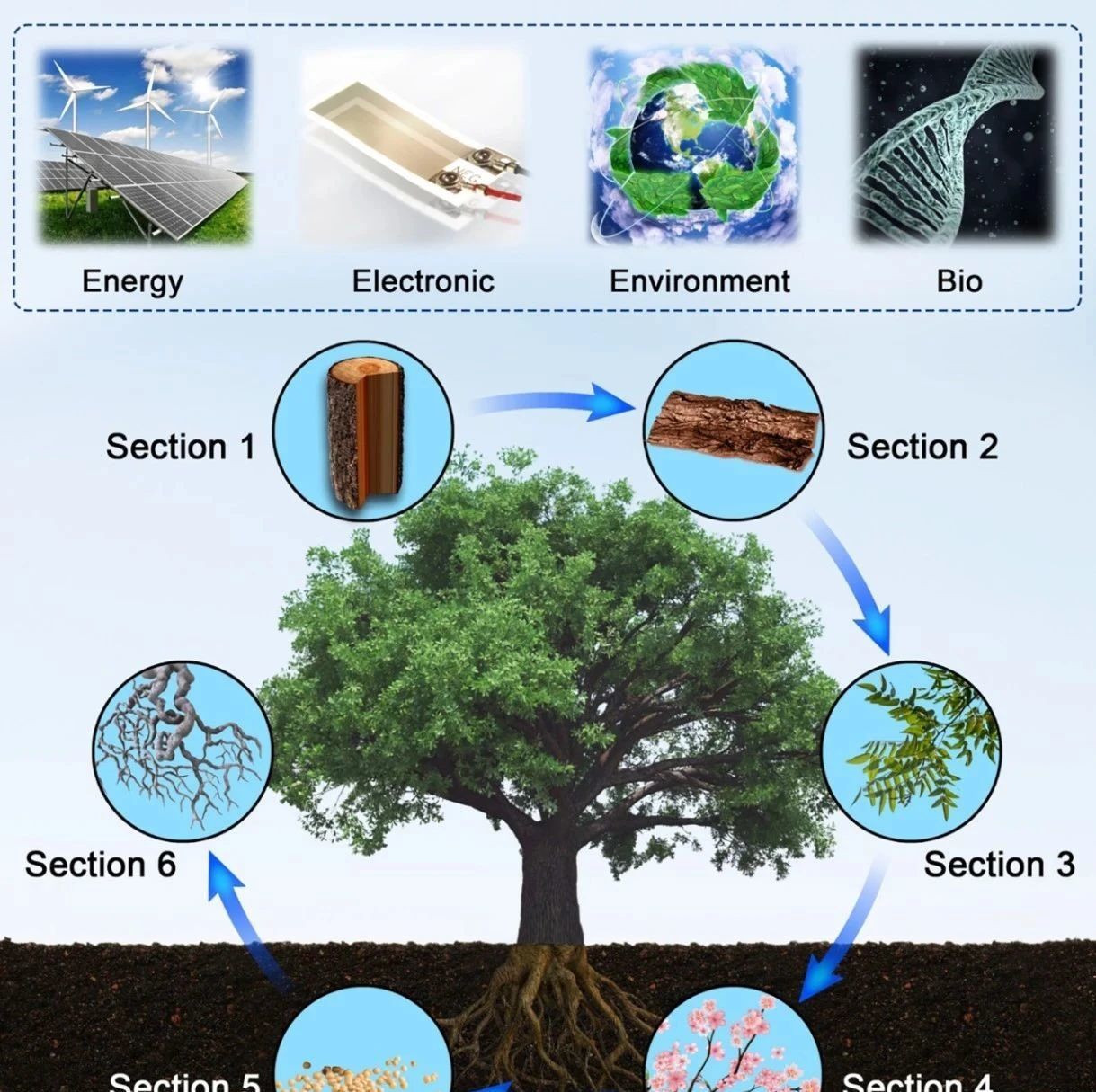
Figure. Schematic illustration of the main sections in this review, including materials and structures derived from the trees (trunk, bark, leaf, flower,seed, and root) for the applications in energy, electronic, environmental, and biological fields.
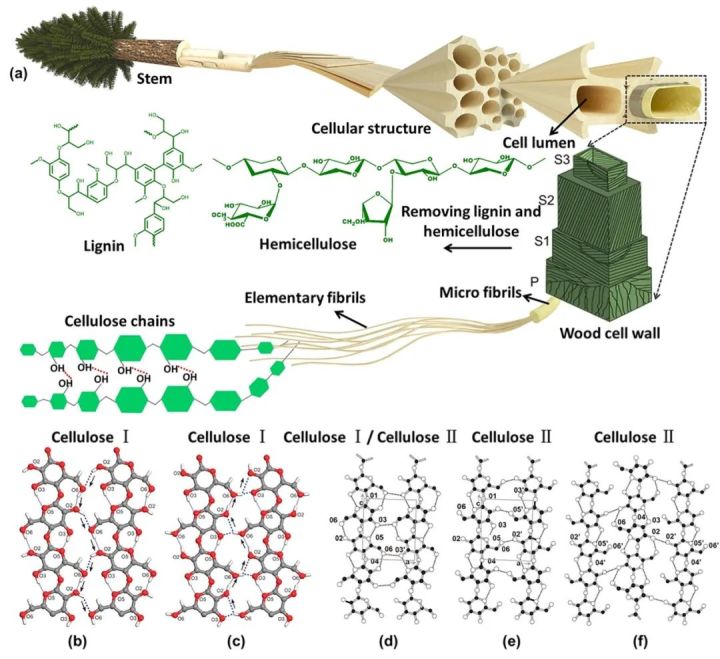
Figure 3. a) Graphical illustration of hierarchical structure of wood, from macroscopic to molecular scale. b,c) Schematics of suggested hydrogen bonding system of cellulose I and cellulose II, (110)t plane (b) and (200)m (c) in cellulose I, in which the cellulose chains are linked together by intermolecular hydrogen bonds at O(2)H-O(6). b,c) Reproduced with permission.
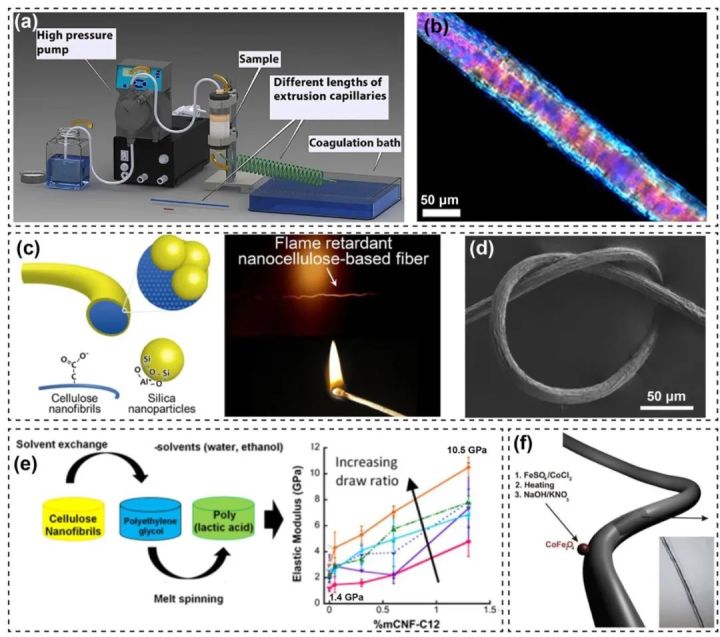
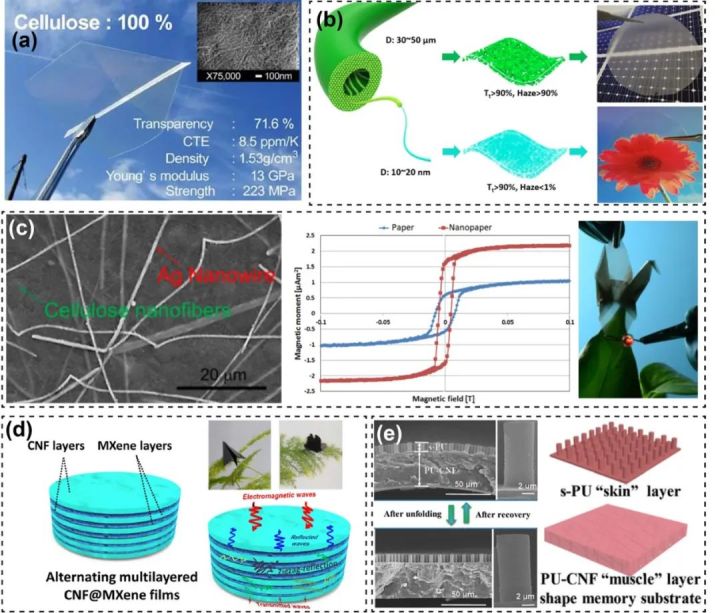
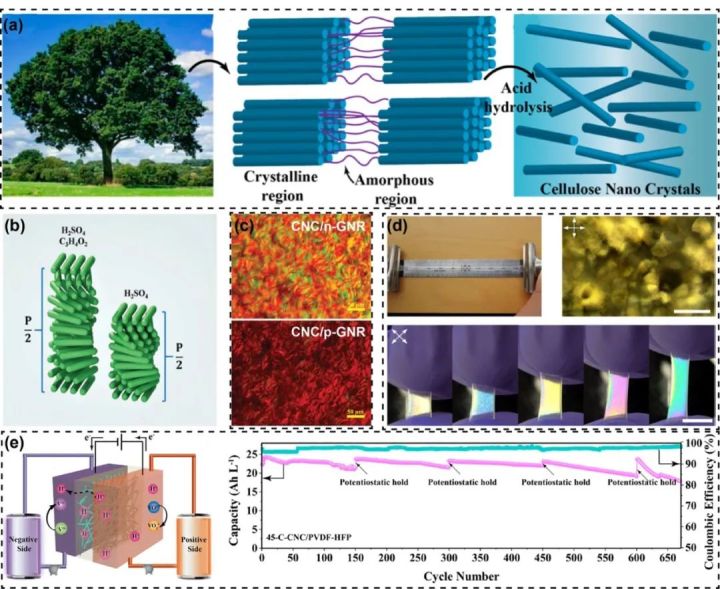
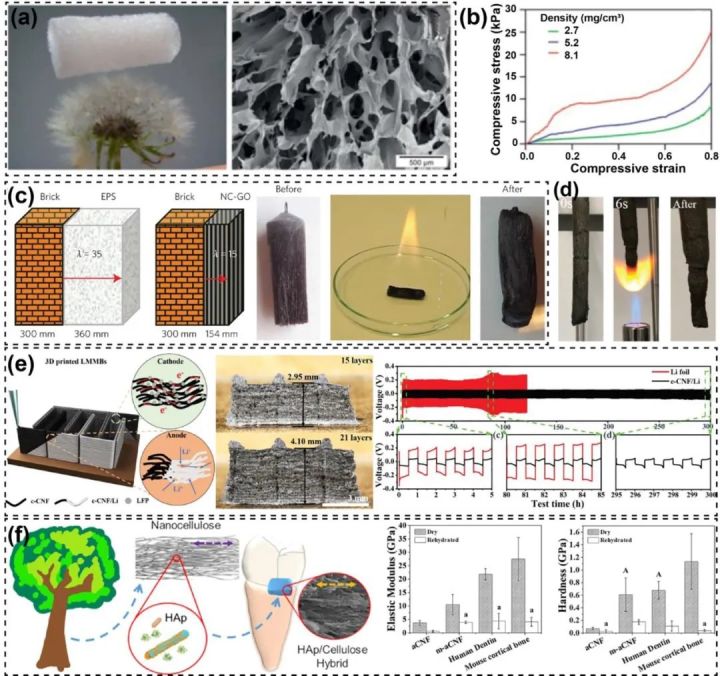
It was reported by Polymer Technology and ZHIHU Media by July 27, 2020.
Please visit: https://www.163.com/dy/article/FG52UATP05329TW8.html
